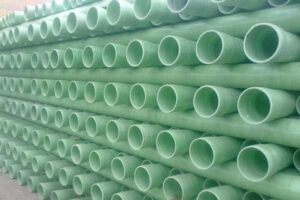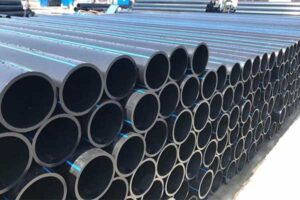With excellent performance, FRP pipes and HDPE pipes are widely used in different markets. What is the difference between these two materials?
High-Density Polyethylene referred to as “HDPE” is a non-polar thermoplastic resin with high crystallinity. HDPE has good electrical properties, especially high dielectric strength, making it very suitable for wire and cable.

FRP pipes
Glass fiber reinforced plastic (FRP) is also known as GFRP. It generally refers to glass fiber reinforced unsaturated polyester, epoxy resin and phenolic resin matrix, reinforced plastic with glass fiber or its products as reinforcement materials, called glass fiber reinforced plastics, or FRP, is different from tempered glass.

HDPE pipes
FRP and HDPE products have excellent wear resistance, electrical insulation, toughness, and good chemical stability. The differences are as follows:
The same process of them is pultrusion. The difficulty of processing the finished products is almost the same, but the processing surface of FRP is not easy to be fine.
Compared to FRP products, HPDE products have poorer weather resistance and lower heat resistance. The heat resistance of high-density polyethylene is 60℃-70℃, while the heat resistance of FRP is 100-120℃. Therefore, HDPE pipes cannot be used for hot water pipes.
FRP is heavier than HDPE. The density of FRP is 1.5~2.0g/cm3, and the density of HDPE is 0.940~0.976g/cm³.
HDPE products are prone to aging and have a shorter life span than FRP.




























